Olympic National Park often gets overlooked in favor of America’s more famous parks like Yellowstone or Yosemite, but this Pacific Northwest gem packs an incredible variety of landscapes into its 922,650 acres – from misty rainforests to rugged coastline to snow-capped peaks.
Whether you’re planning a weekend getaway or a week-long adventure, here are 21 different ways to experience this diverse wilderness playground, from easy nature walks to challenging hikes and everything in between.
Hurricane Ridge
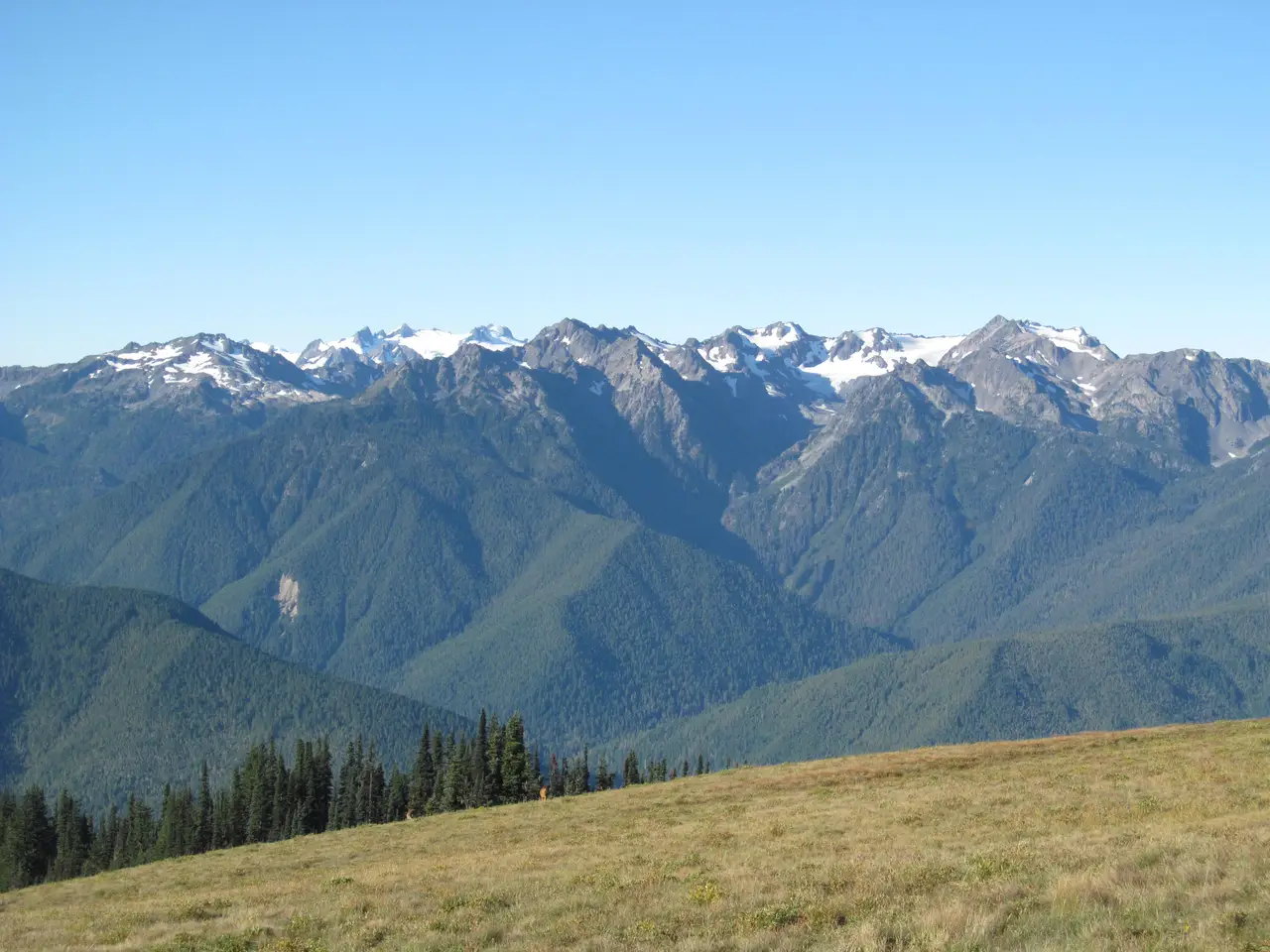
Many visitors flock to Hurricane Ridge for its sweeping views of Olympic National Park’s mountain ranges, but this area offers much more than just a photo opportunity. At 5,242 feet above sea level, the ridge serves as a gateway to both summer and winter activities, from wildflower meadow hikes to downhill skiing. The Hurricane Ridge Visitor Center provides essential information about trail conditions and wildlife sightings, while the surrounding area offers numerous hiking paths for all skill levels. Though the 17-mile road to the top requires some careful driving, especially in winter months, you’ll find the journey worthwhile any time of year, whether you’re spotting grazing deer in spring or snowshoeing under clear winter skies.
Hoh Rain Forest
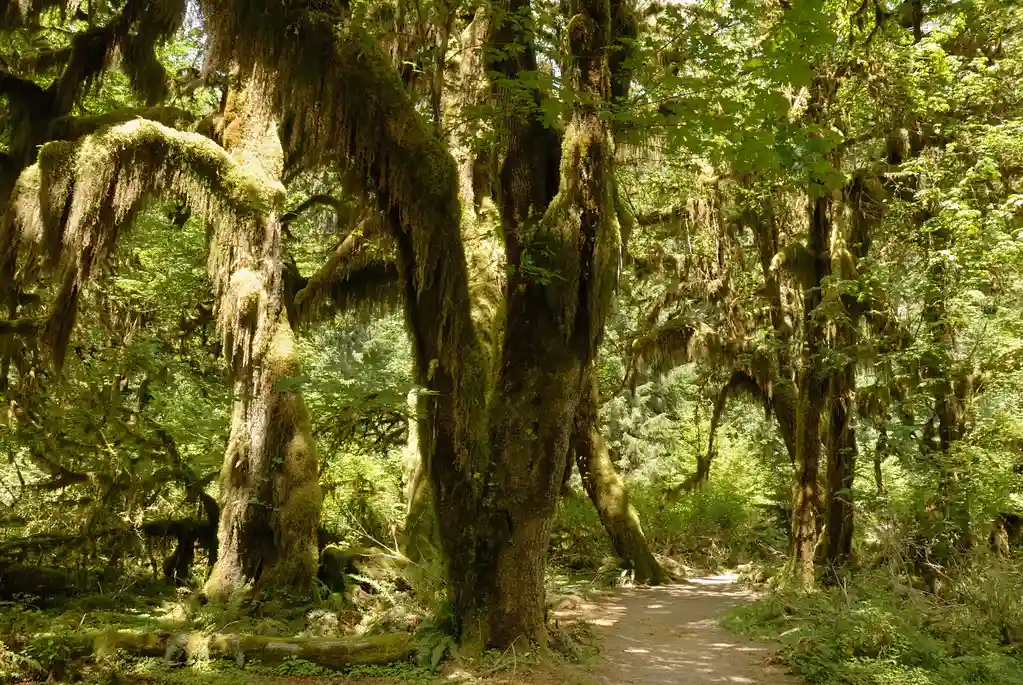
The Hoh Rain Forest draws nature enthusiasts to Olympic National Park for its lush, moss-draped trees and unique ecosystem, but this corner of Washington can also be considered one of the finest examples of a temperate rainforest in the United States. The forest receives around 140 inches of rain each year, creating an environment where massive Sitka spruce and western hemlock trees thrive alongside dense ferns and hanging moss. While many visitors come for the popular Hall of Mosses Trail, which offers an accessible 0.8-mile loop through the forest, the Hoh River Trail provides a longer journey deep into the wilderness, where Roosevelt elk often graze and countless species of birds make their home among the ancient trees.
Ruby Beach
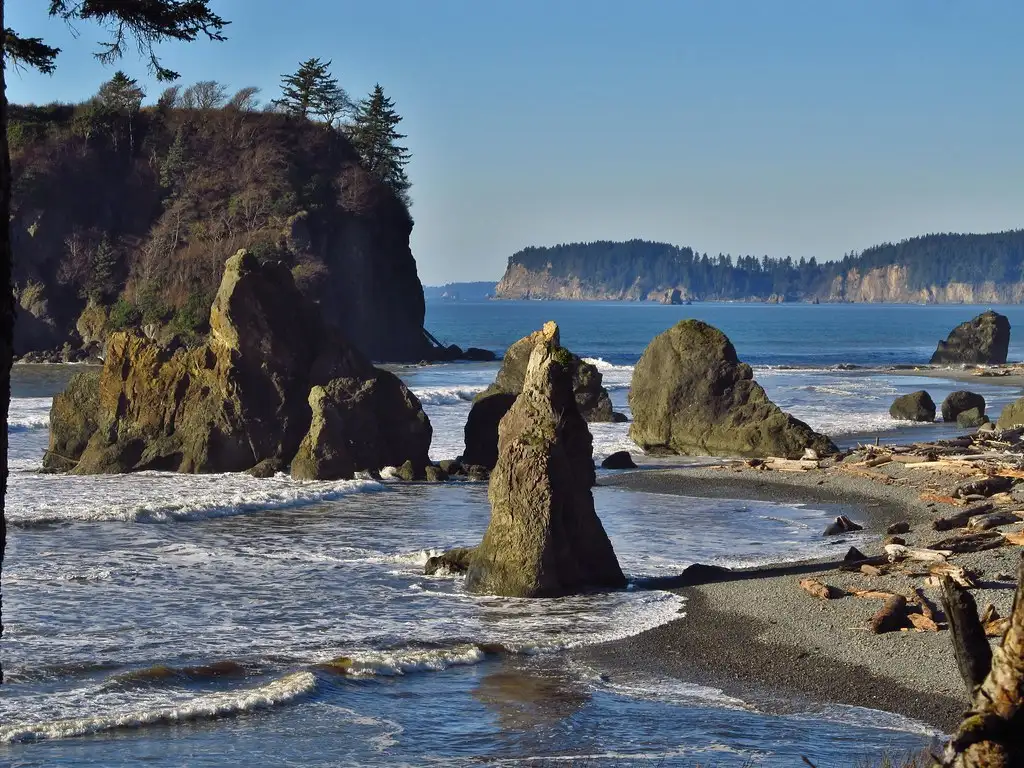
Ruby Beach draws visitors year-round to the northern coast of Olympic National Park, where driftwood and sea stacks create an otherworldly scene along the Pacific shore. The beach’s distinctive features include large rock formations that rise from the water and countless pieces of smooth driftwood scattered across the sand. While many come for the tide pools teeming with starfish and anemones during low tide, the area also offers excellent opportunities for storm watching in winter months and sunset viewing throughout the year. A short but steep trail leads down to the beach from the parking area, and visitors can spend hours beachcombing, exploring the coastline, or simply watching the waves crash against the shore’s iconic sea stacks.
Lake Crescent

Lake Crescent draws visitors to Olympic National Park with its deep blue waters and forested shoreline, but this glacially-carved lake offers more than just pretty views. The pristine waters reach depths of nearly 600 feet, creating ideal conditions for fishing and kayaking during warmer months. Several trails wind through the surrounding old-growth forest — including the Spruce Railroad Trail and Marymere Falls path — offering opportunities for both casual walks and longer hikes. While summer brings crowds to the historic Lake Crescent Lodge and its pebbly beaches, you’ll find peaceful moments here throughout the year, especially during fall when fog rolls across the water in the early morning hours.
Sol Duc Falls
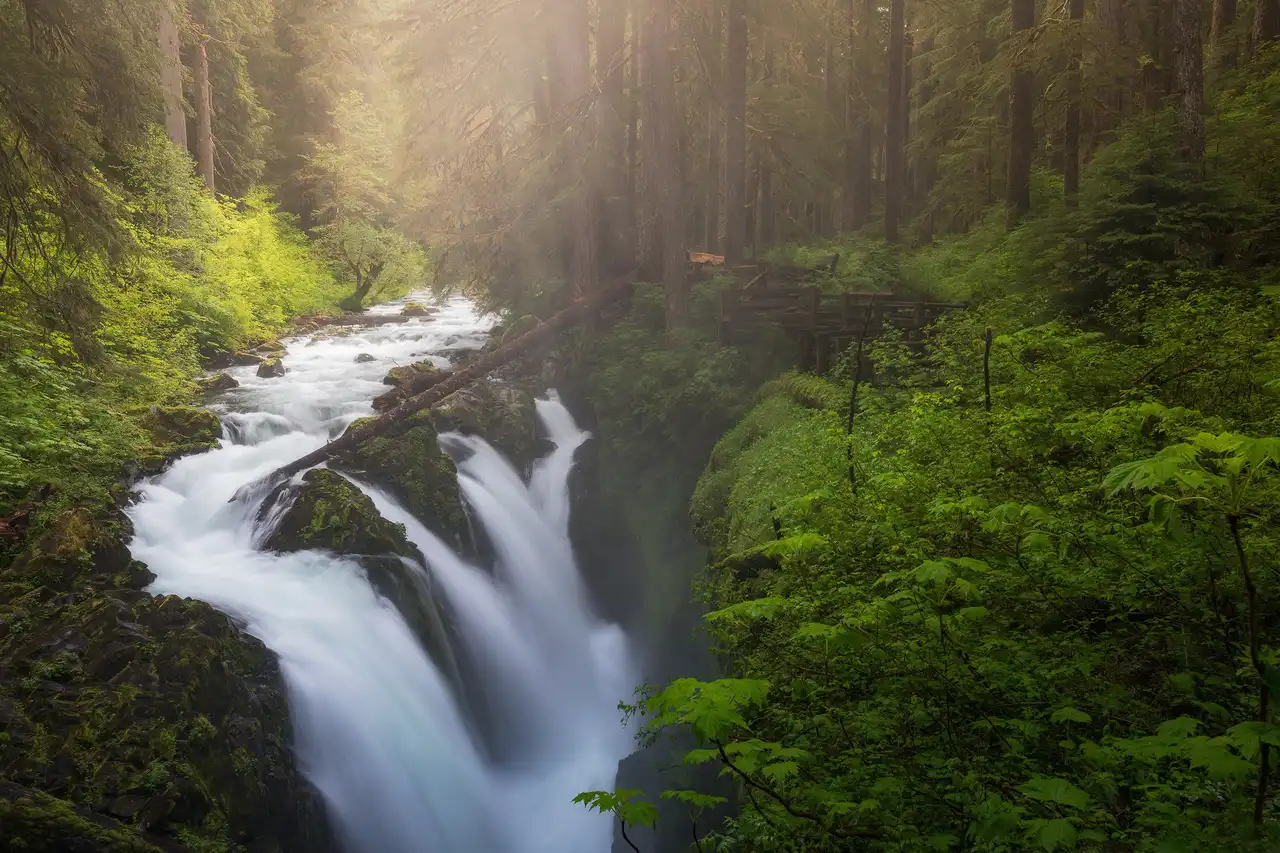
Hidden in the lush northwestern corner of Olympic National Park, Sol Duc Falls is one of those places that feels like it was plucked straight from a fairy tale. The 1.6-mile roundtrip trail winds through an old-growth forest where moss-draped trees tower overhead and ferns carpet the forest floor. What makes this waterfall special isn’t its height – it’s the way it splits into three or four distinct channels as it tumbles 48 feet into a narrow canyon below. As you cross the rustic wooden bridge that spans the gorge, the thundering sound of water fills the air, and on misty mornings, you might catch glimpses of rainbows dancing in the spray. Unlike many of the park’s other attractions, Sol Duc Falls remains accessible most of the year, though winter visits often require navigating through snow.
Rialto Beach

Explore the untamed beauty of Rialto Beach, where the Pacific Ocean meets the Olympic wilderness in dramatic fashion. The beach stretches for miles along the coast, dotted with massive driftwood logs and towering sea stacks that rise from the water like ancient sentinels. Take a leisurely walk to Hole-in-the-Wall, a natural arch formation about 1.5 miles north of the parking lot, where you can spot tide pools teeming with starfish and anemones during low tide. For the best experience, plan your visit around sunset when the sky puts on a natural light show and the waves create a peaceful soundtrack to your coastal adventure.
Mount Olympus
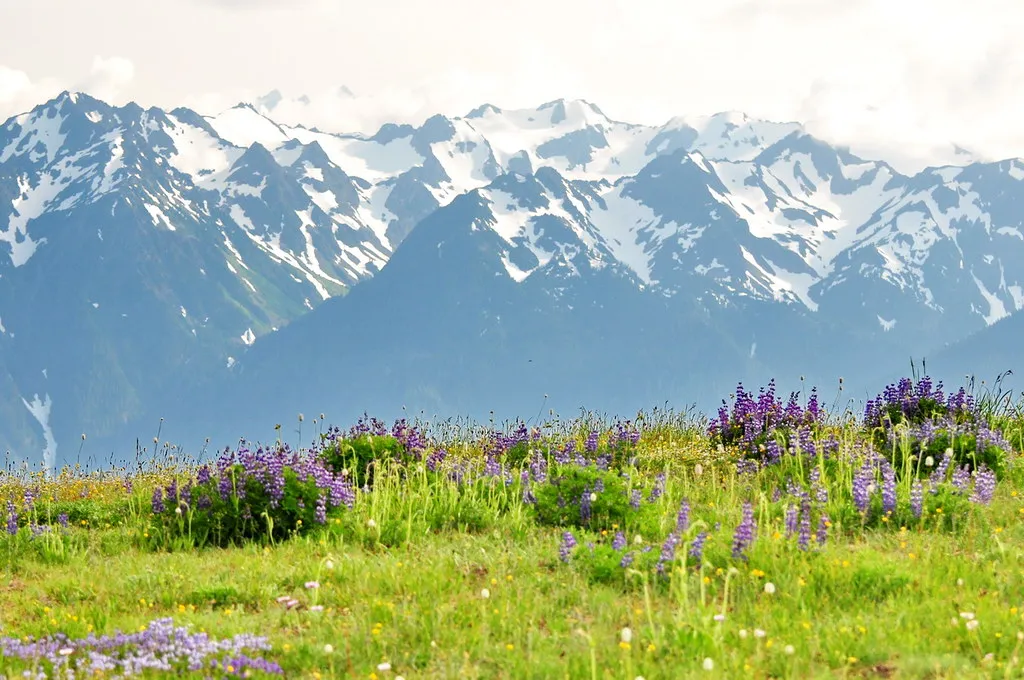
Standing at 7,980 feet, Mount Olympus serves as the crown jewel of Olympic National Park and draws adventurers from across the globe. While many visitors come to tackle the challenging climb to its summit, the mountain’s surrounding landscape offers opportunities for both experienced mountaineers and casual hikers alike. The peak, often wrapped in clouds and covered in snow year-round, features several glaciers that have carved out the dramatic terrain below. You don’t need to be a skilled climber to appreciate Mount Olympus though – the surrounding trails provide excellent vantage points for viewing the mountain, and the Hoh River Valley at its base offers peaceful walks through old-growth forests where you can spot local wildlife.
Marymere Falls
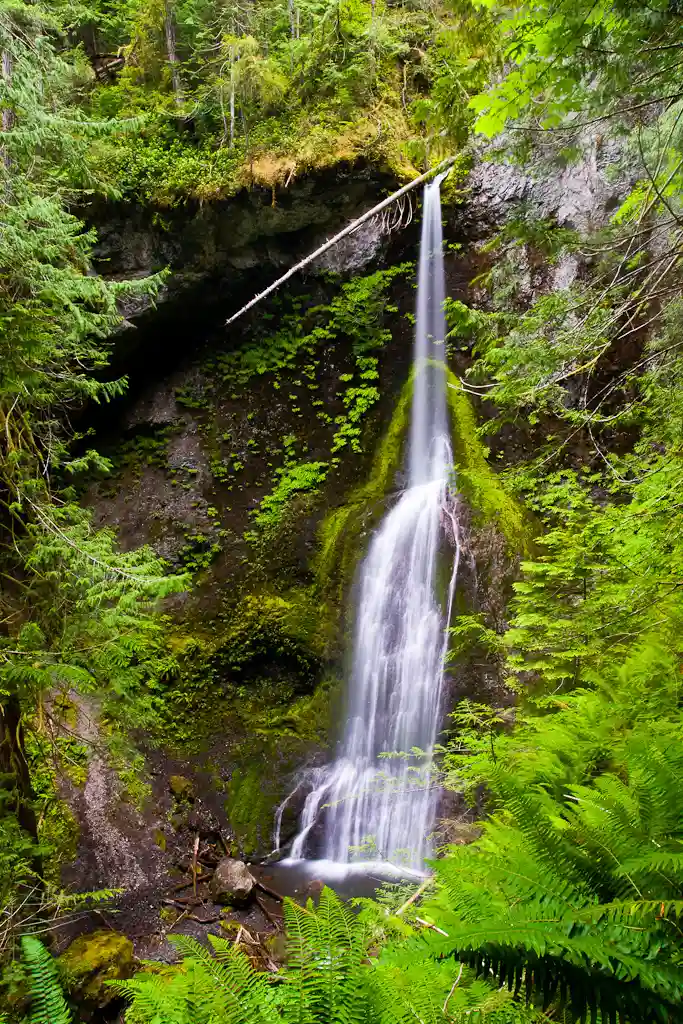
If you’re looking for a classic Olympic National Park experience, head to Marymere Falls. Located near Lake Crescent Lodge, this 90-foot waterfall tumbles through a lush forest setting that perfectly captures the essence of the Pacific Northwest. The easy 1.8-mile round-trip trail takes you through old-growth forest and across wooden bridges before reaching the falls’ misty base.
Quinault Lake
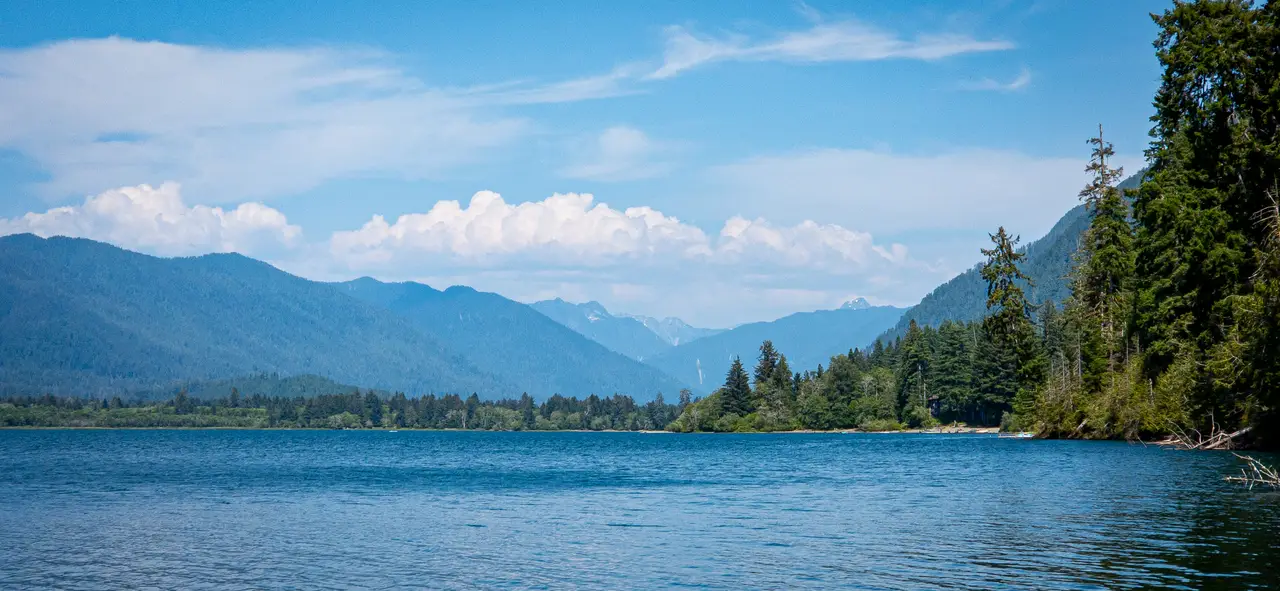
Lake Quinault first caught my eye during a rainy October trip to Olympic National Park in 2019. Nestled in the southwestern corner of the park, this glacial lake spans nearly 4 square miles, surrounded by the ancient Quinault Rainforest. The lake’s shoreline meanders past small lakeside cottages and the historic Lake Quinault Lodge, built in 1926, which sits along the south shore. The calm waters mirror the towering Douglas firs and western red cedars, while Roosevelt elk often emerge from the misty forest to drink at the water’s edge. A gentle 4-mile loop trail circles part of the lake, offering glimpses of local wildlife and the occasional bald eagle soaring overhead.
Staircase Rapids
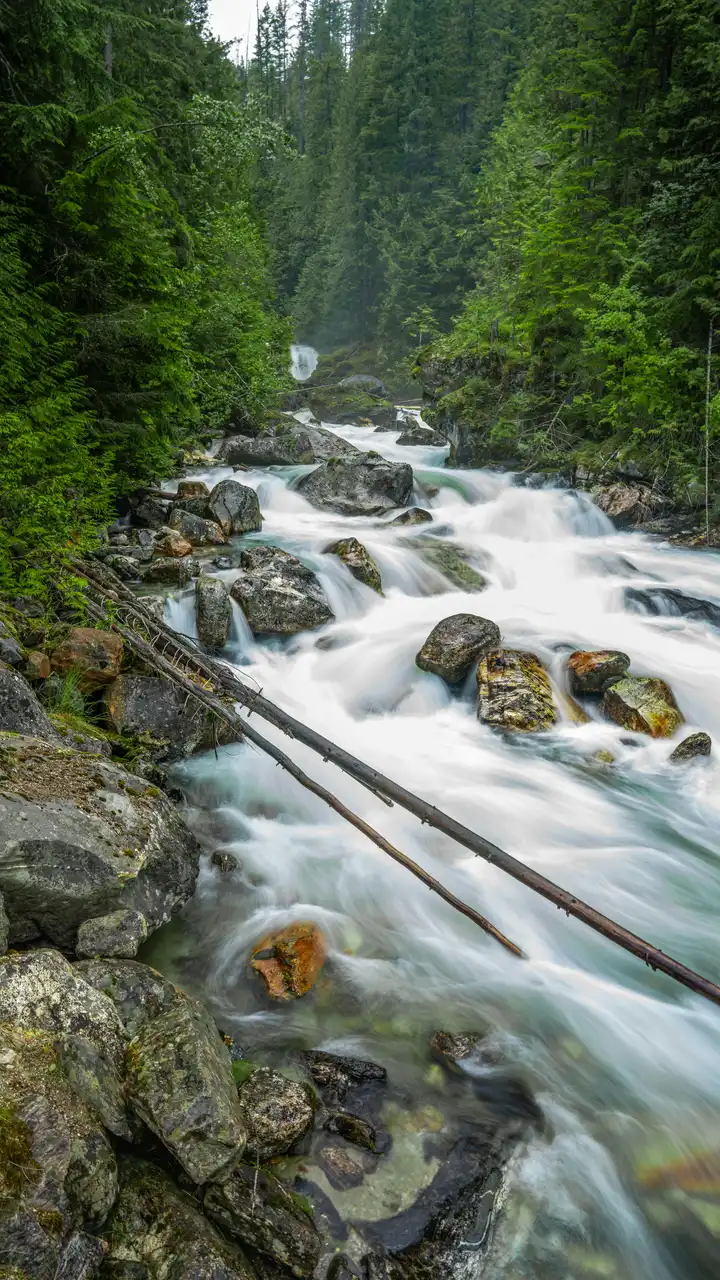
If you’re looking to experience the raw beauty of Olympic National Park, head to Staircase Rapids. Located in the southeastern corner of the park, this 2-mile loop trail follows the North Fork Skokomish River through towering old-growth forest, leading you to rushing rapids and crystal-clear pools. The well-maintained path offers plenty of spots to stop and watch the water tumble over moss-covered rocks, making it perfect for both casual hikers and nature photographers.
Did You Know This Fact?
Did you know that Staircase Rapids Trail got its name from the way the North Fork Skokomish River tumbles down a series of natural rock steps, creating mini-waterfalls as it flows through Olympic National Park? The 2-mile round trip trail follows alongside these “stairs,” offering visitors a chance to watch the water dance and splash while surrounded by towering old-growth forest that’s been standing for hundreds of years.
Deer Park
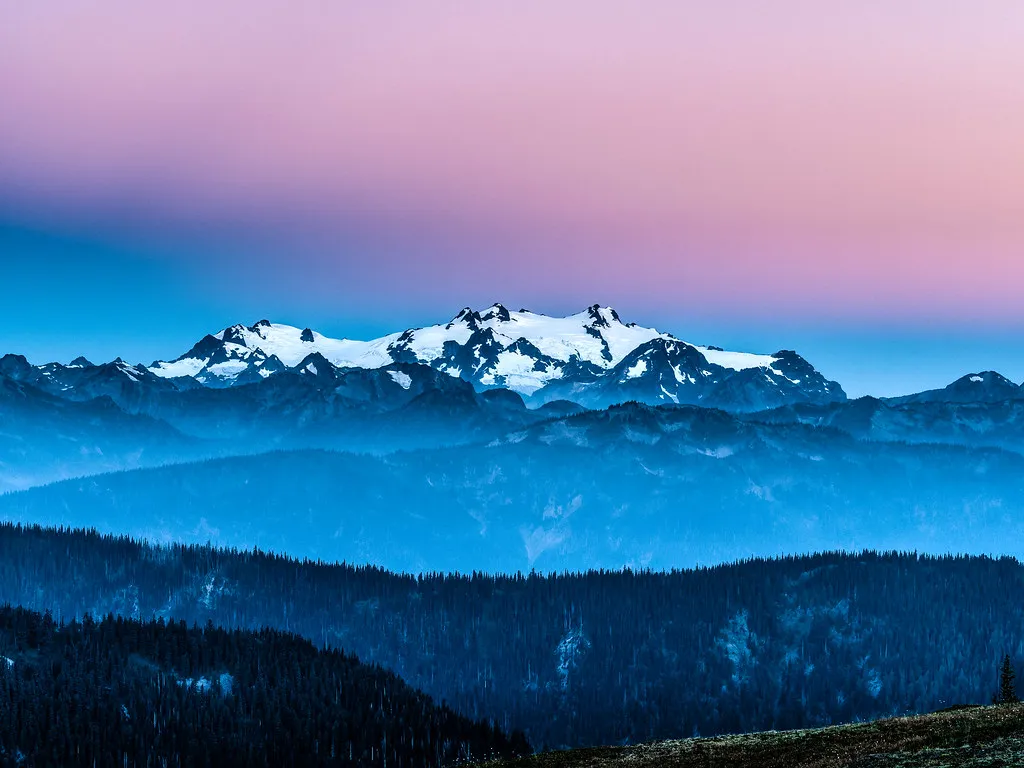
Deer Park offers a different perspective on Olympic National Park that most visitors never experience. Located at 5,400 feet elevation on Blue Mountain, this peaceful area showcases wildflower meadows and gives you clear views of the Olympic Mountains and Strait of Juan de Fuca. The steep 18-mile drive up gravel roads keeps crowds away, making it perfect for spotting wildlife like deer, marmots, and black bears in their natural habitat.
Shi Shi Beach
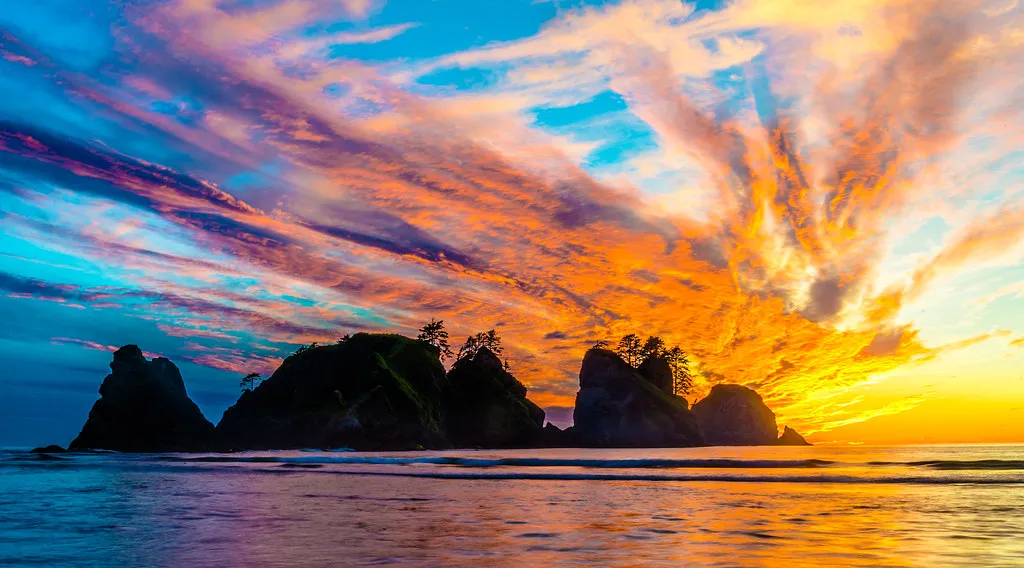
Shi Shi Beach sits along the rugged northwestern coast of Olympic National Park, where I first discovered its wild beauty during a summer hiking trip in 2019. This two-mile stretch of coastline offers one of Washington’s most remote beach experiences, accessed by a winding trail through dense forest that opens up to dramatic ocean vistas. The beach itself is dotted with massive driftwood logs and tide pools, while the Point of Arches – a collection of sea stacks and natural rock formations – stands guard at its southern end. During low tide, visitors can explore countless small caves and pools teeming with starfish, anemones, and tiny crabs, making it feel like nature’s own aquarium.
Madison Falls
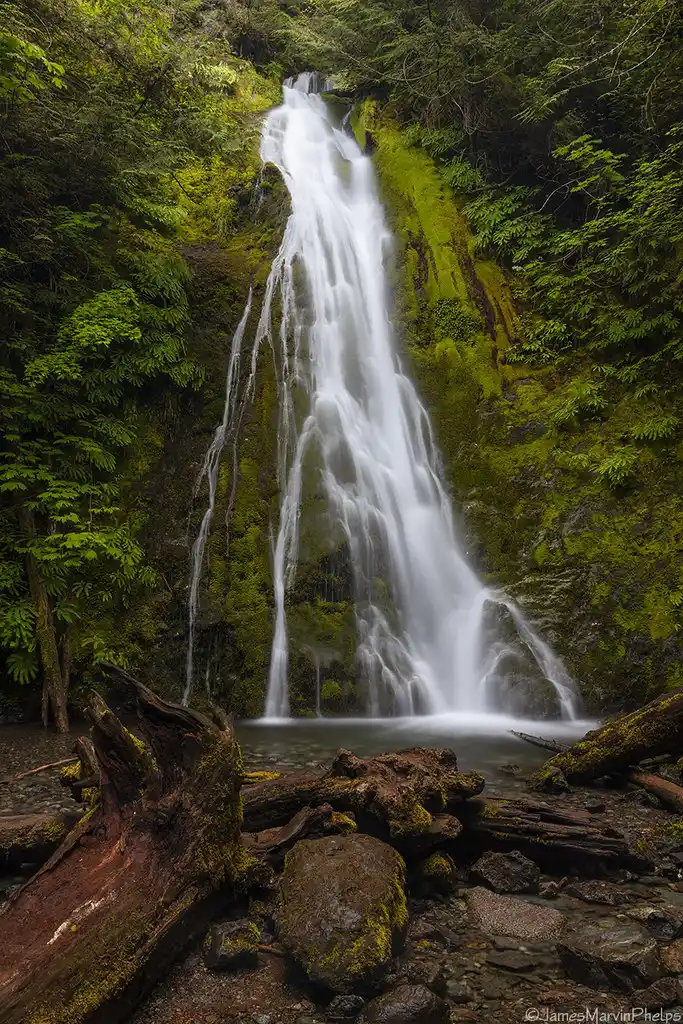
If you’re looking for an easy hike near the Elwha River, Madison Falls is a perfect choice. Located just a short walk from the parking area, this 50-foot waterfall cascades down moss-covered rocks and is surrounded by thick forest. The paved, wheelchair-accessible trail makes it one of Olympic National Park’s most family-friendly attractions.
Olympic Hot Springs
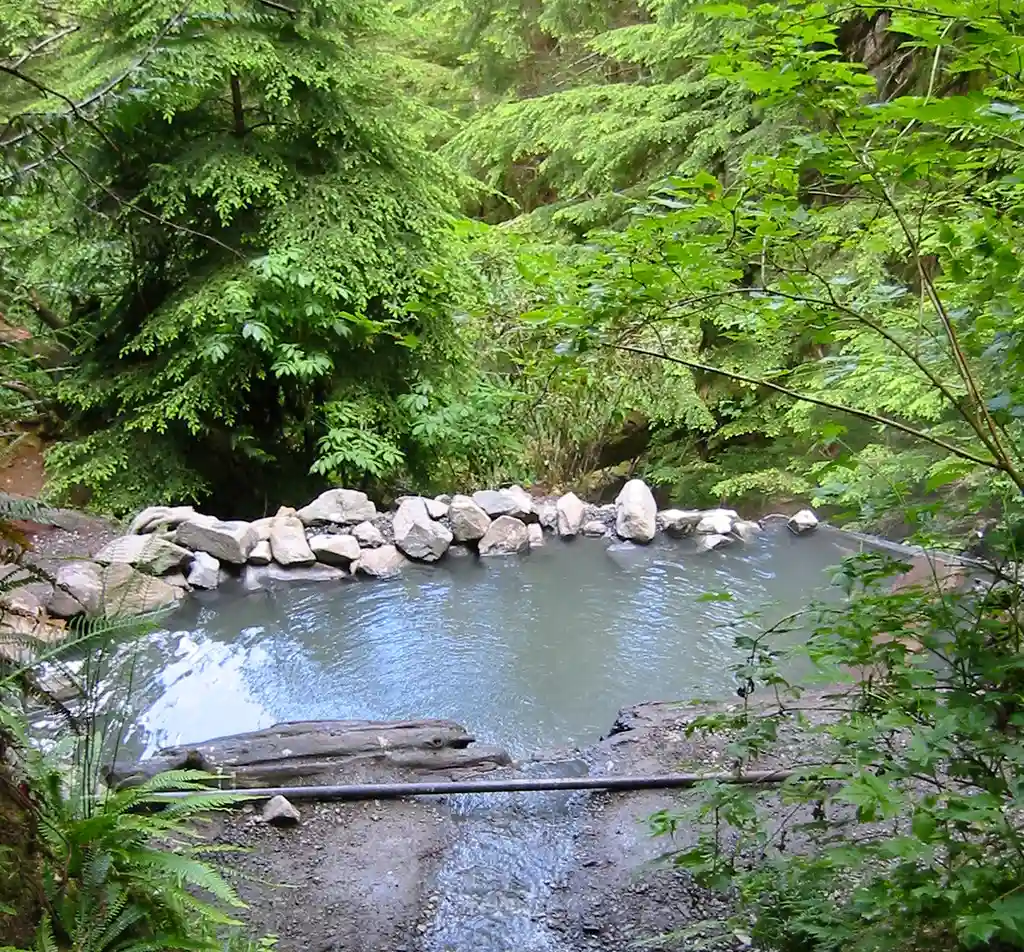
I always recommend checking out Olympic Hot Springs to anyone exploring the park’s hidden gems. Nestled deep in the Elwha Valley, these natural thermal pools offer a peaceful retreat where you can soak in warm mineral waters while surrounded by towering evergreens. The springs feature several different pools of varying temperatures, and reaching them requires a moderate 2.5-mile hike along an old road bed – but the reward is well worth the effort.
Hall of Mosses Trail

Step into a fairy tale when you walk through the Hall of Mosses Trail, a 0.8-mile loop in the Hoh Rainforest. This easy trail takes you through old-growth forest where moss-draped maples and towering spruce trees create a natural cathedral effect. Along the way, you’ll find helpful interpretive signs explaining how this unique ecosystem thrives with over 140 inches of rain each year. The best time to visit is during early morning or late afternoon when the sunlight filters through the canopy, creating interesting shadows and photo opportunities among the hanging moss.
Kalaloch Beach
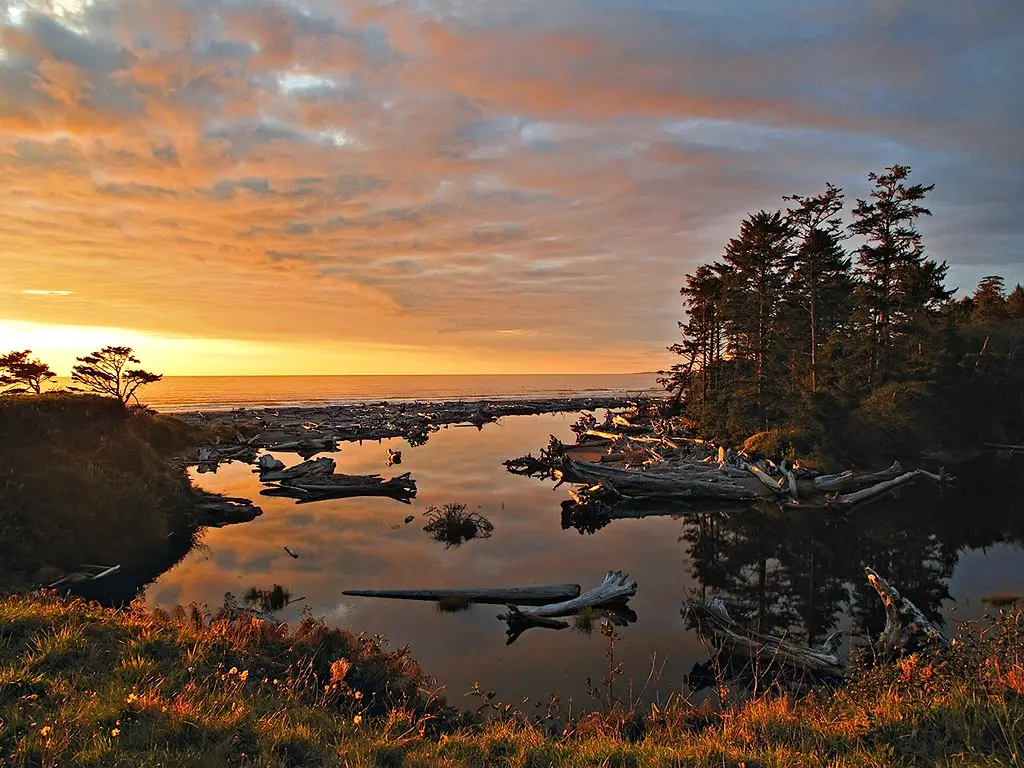
Located along the southwestern edge of Olympic National Park, Kalaloch Beach offers a pristine stretch of Pacific coastline where nature puts on quite a show. You’ll find massive driftwood logs scattered across the sand, tide pools teeming with colorful sea stars and anemones, and the famous “Tree of Life” – a Sitka spruce hanging on despite its roots being completely exposed by erosion. The beach makes an ideal spot for watching migrating whales in spring and fall, or simply walking along the shore while keeping an eye out for bald eagles soaring overhead.
High Divide Loop
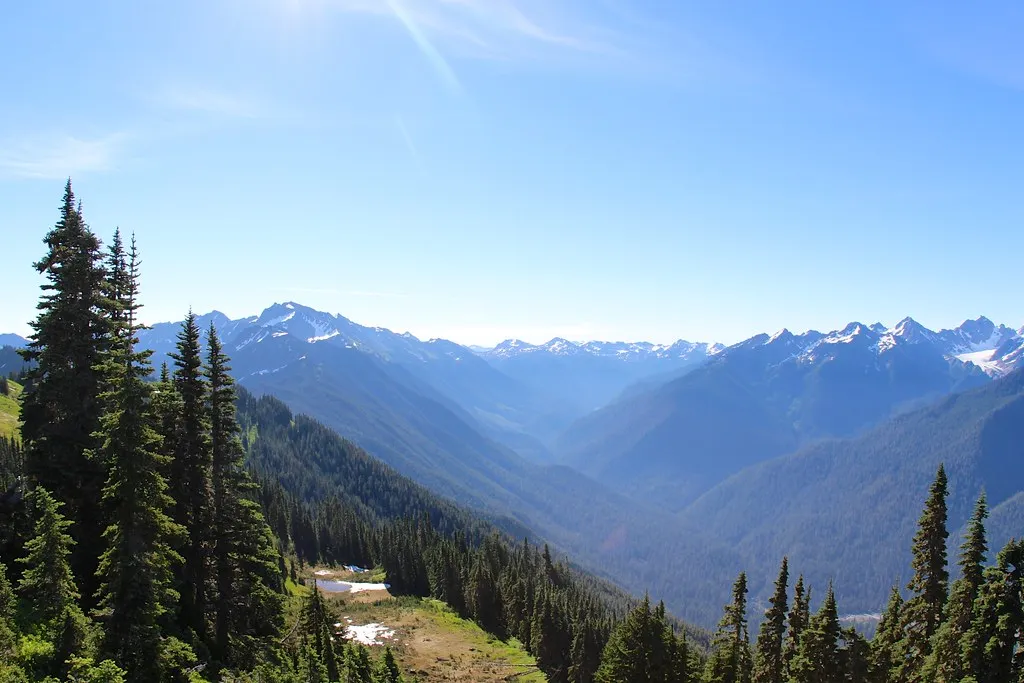
The High Divide Loop trail in Olympic National Park draws hikers seeking both mountain and valley views, but this challenging route offers much more than just scenic outlooks. The 18-mile loop takes you through subalpine meadows and past crystal-clear lakes, with chances to spot Roosevelt elk and black bears along the way. While many visitors come for the sweeping views of Mount Olympus, the real magic lies in the changing landscape – from dense forests to open ridgelines. Though most popular in late summer when wildflowers paint the meadows, the trail provides different experiences across the seasons, whether you’re watching mountain goats graze or listening to marmots whistle in the distance.
Obstruction Point

Obstruction Point was my first introduction to Olympic National Park’s rugged high country back in 2019. Located 8 miles from Hurricane Ridge, this narrow dirt road leads to one of the highest points accessible by car in the park at 6,150 feet. Alpine meadows and rocky peaks dominate the landscape here, where mountain goats roam freely across the ridges. The 8-mile trail to Deer Park offers some of the park’s best views of the Olympic Mountains, Strait of Juan de Fuca, and on clear days, even British Columbia’s Vancouver Island. Wildflowers carpet the hillsides in mid-summer, creating a natural garden that draws hikers and photographers to this less-visited corner of the park.
Second Beach
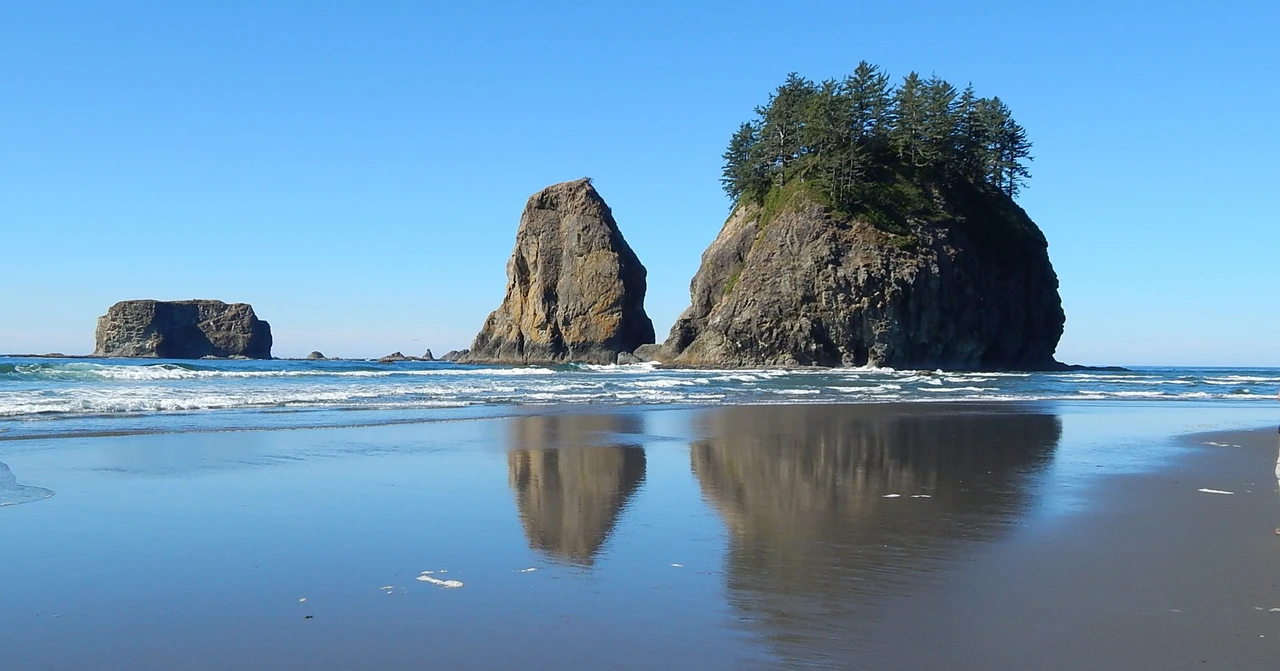
Looking for an easy hike with major coastal payoff? Second Beach offers exactly that. Located in the Olympic National Park’s coastal section, this 4-mile round trip trail leads you through towering Sitka spruce forest before opening up to reveal dramatic sea stacks, tide pools teeming with starfish, and a wide sandy beach perfect for watching the sunset. During low tide, you can explore hidden caves and spot seals lounging on offshore rocks.

